Allotment approved after parcel sold to Warroad School
The sale of Namaypoke's land before his death in 1916
When I looked into what Namaypoke had to do with the Warroad Warrior mascot [spoiler alert: not much], I found the school was on land included in Namaypoke’s allotment. But a couple things surprised me.
One, his application for the allotment had been submitted much earlier than 1905. And two, his allotment papers didn’t arrive from Washington, DC, until a year after the sale.
So how exactly did the sale of this parcel of Indian land occur before the federal government issued him an allotment?
Digging deeper into the local archives last summer, I found Namaypoke had applied for an allotment in 1897 with the assistance of Mr. Charles A. Moody — who would become president of the school board in 1904 and offer to purchase a small parcel of it. The application for an allotment preceded the incorporation of Warroad into a city.

The year of 1897 is also when Mr. Moody moved to Warroad from Roseau after succeeding in his political efforts to have Roseau County annex unceded Red Lake Reservation land which included the Ojibway village of Warroad. And 1897 was the same year school started in a log building on Namaypoke’s land.
In 1903, Moody assisted Namaypoke a second time with an amended allotment application. This I discovered when Namaypoke’s great-grandson, Roy Jones, sent me documents that called into question the motivations for designating the land where he lived as Indian trust land.

What changed between 1897 and 1903? Squatters and land speculators had encroached on the Ojibway village and in 1902 the area north of Upper Red Lake opened to homestead claims and reservation lands were diminished.
The amended application short-changed Namaypoke of 40 acres in order to resolve competing claims for his land along the Warroad River.
Namaypoke’s allotment application was approved with intense lobbying efforts by the school district to gain clear title to the land where they had already operated a schoolhouse and paid Namaypoke for the 4.5 acre parcel. Otherwise, the state of Minnesota would not permit school bonds to be issued for the construction of a bigger schoolhouse for all the new settlers’ children.
In 1912 — only six years after his allotment papers arrived — Namaypoke applied to the Red Lake Indian Agency for a clear deed to his allotment.
Namaypoke’s land had become home to Métis and landless Indians, widows, and white families who worked in commercial fishing, lumber, laying railroad tracks, farming — labor vital to the business interests and growth of the city. A lumber mill and creamery had been built on his land.
The Indian Agent denied Namaypoke’s application and declared him non-competent. Then the Agent sold two parcels — half his allotment — in 1914.
After the sale, the Warroad Townsite Company — like townsite companies across the country established to survey, plat and build town sites to develop real estate — managed to clear land titles, contracts, deeds and claims from what had been Indian land. Subdivided into city lots, the land was sold.
A house was built for Namaypoke in 1915 from the proceeds of his land sale, but he died in 1916, shortly after he moved in.
His estate included what remained of his allotment: a 40 acre parcel and 7 acres along the river. The smaller parcel is where he is buried.
Next week, I’ll string together a chronology of what happened to the rest of the land in his allotment after his death.

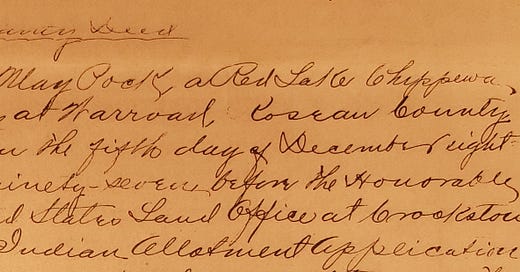


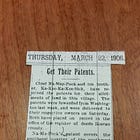
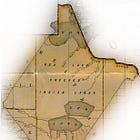
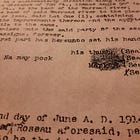
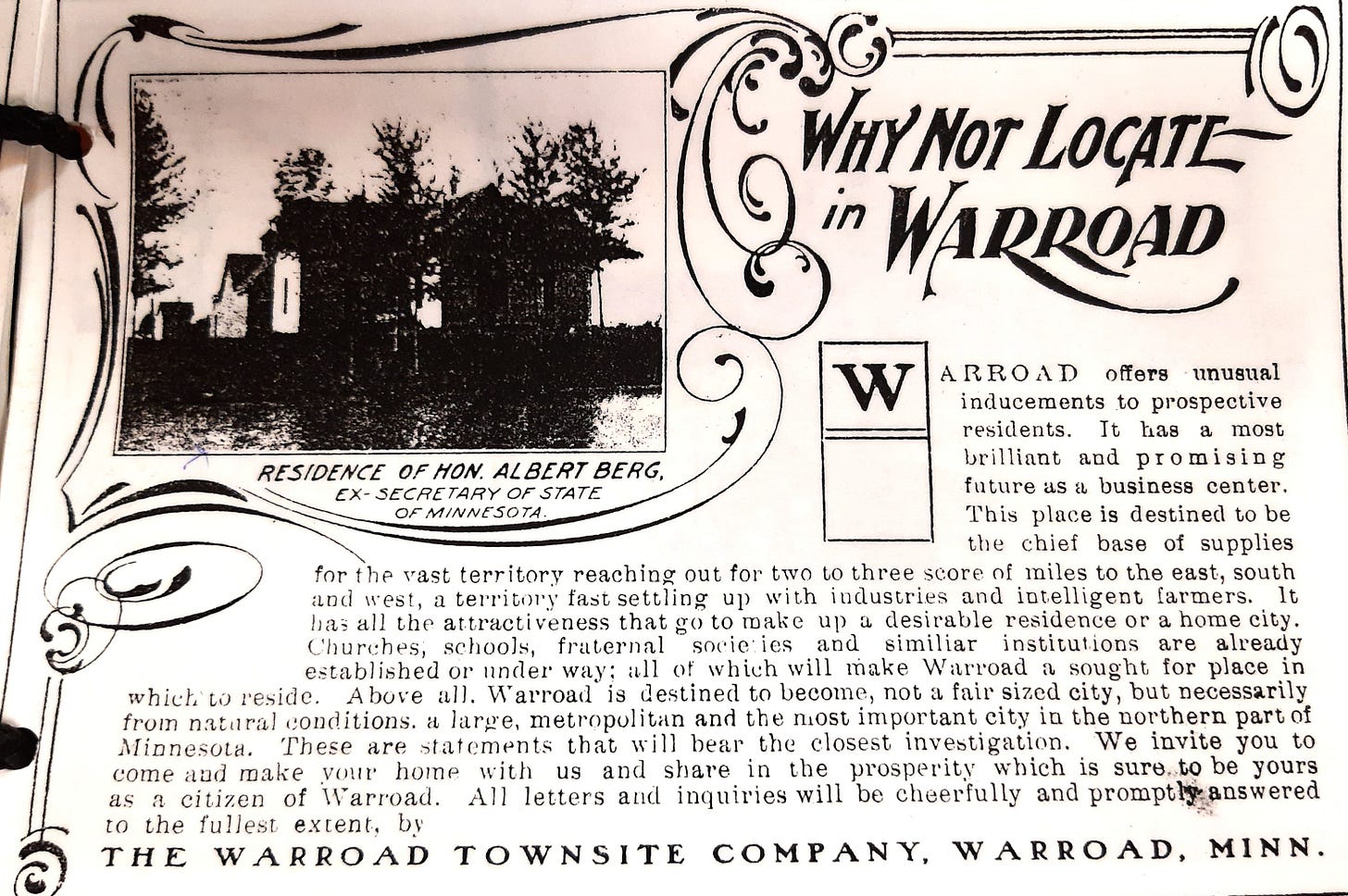
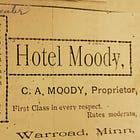
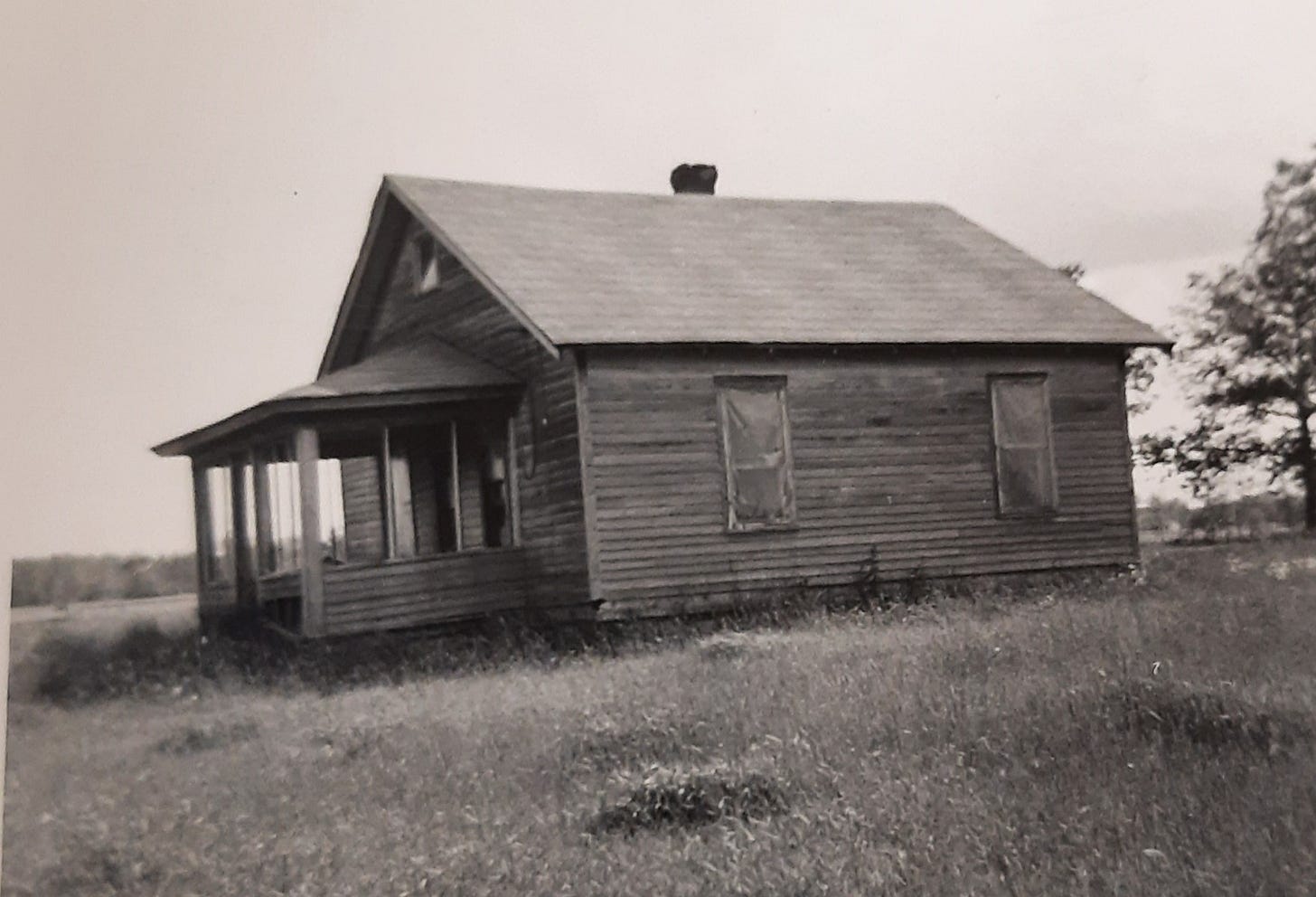
Jill
I’m working on a story about an abstract company in northwestern Wisconsin. I saw an abstract (or deed for a homestead) for land which was signed by Grover Cleveland in 1862. Abstract companies work very hard to ensure a potentially new property owner has “ clear” title .
( I’m not sure what this has to do with your post - only that I learned a lot about transfer of property.)
It's not surprising that Namaypoke was "short-changed." So many were and it's still happening. Another lesson in our sad history and the way we still function with people who are branded as different. I'm glad you're preserving some of the story.